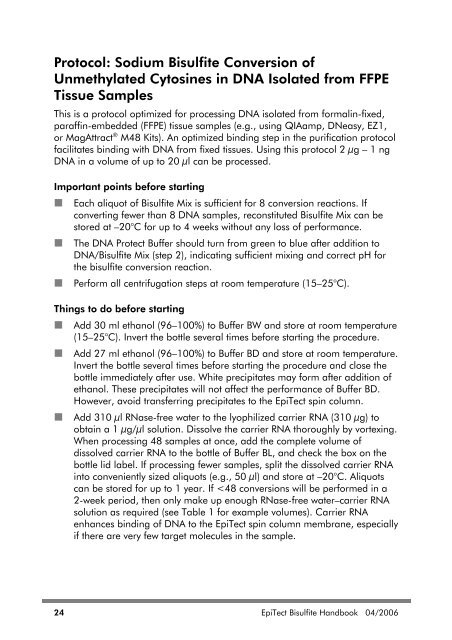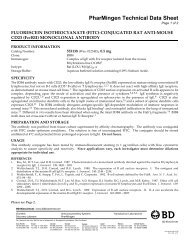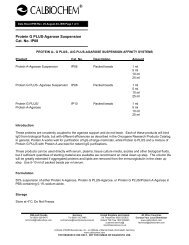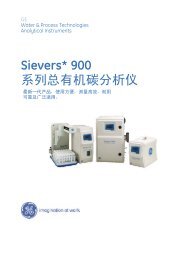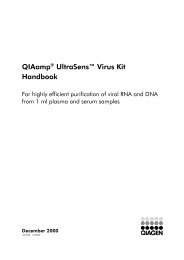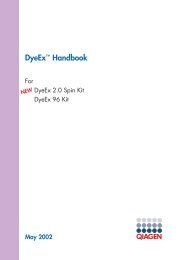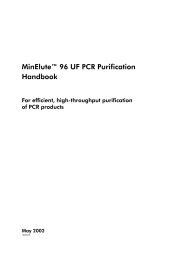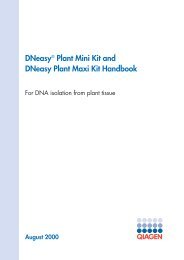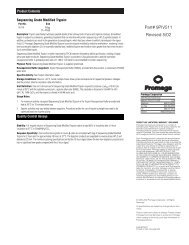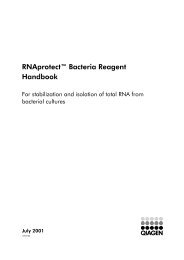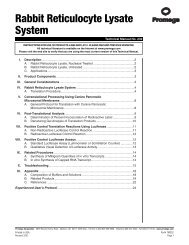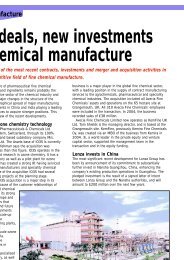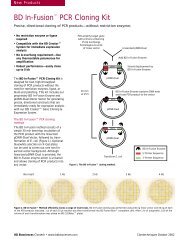EpiTect Bisulfite Handbook
EpiTect Bisulfite Handbook
EpiTect Bisulfite Handbook
Create successful ePaper yourself
Turn your PDF publications into a flip-book with our unique Google optimized e-Paper software.
Protocol: Sodium <strong>Bisulfite</strong> Conversion of<br />
Unmethylated Cytosines in DNA Isolated from FFPE<br />
Tissue Samples<br />
This is a protocol optimized for processing DNA isolated from formalin-fixed,<br />
paraffin-embedded (FFPE) tissue samples (e.g., using QIAamp, DNeasy, EZ1,<br />
or MagAttract ® M48 Kits). An optimized binding step in the purification protocol<br />
facilitates binding with DNA from fixed tissues. Using this protocol 2 µg – 1 ng<br />
DNA in a volume of up to 20 µl can be processed.<br />
Important points before starting<br />
� Each aliquot of <strong>Bisulfite</strong> Mix is sufficient for 8 conversion reactions. If<br />
converting fewer than 8 DNA samples, reconstituted <strong>Bisulfite</strong> Mix can be<br />
stored at –20°C for up to 4 weeks without any loss of performance.<br />
� The DNA Protect Buffer should turn from green to blue after addition to<br />
DNA/<strong>Bisulfite</strong> Mix (step 2), indicating sufficient mixing and correct pH for<br />
the bisulfite conversion reaction.<br />
� Perform all centrifugation steps at room temperature (15–25°C).<br />
Things to do before starting<br />
� Add 30 ml ethanol (96–100%) to Buffer BW and store at room temperature<br />
(15–25°C). Invert the bottle several times before starting the procedure.<br />
� Add 27 ml ethanol (96–100%) to Buffer BD and store at room temperature.<br />
Invert the bottle several times before starting the procedure and close the<br />
bottle immediately after use. White precipitates may form after addition of<br />
ethanol. These precipitates will not affect the performance of Buffer BD.<br />
However, avoid transferring precipitates to the <strong>EpiTect</strong> spin column.<br />
� Add 310 µl RNase-free water to the lyophilized carrier RNA (310 µg) to<br />
obtain a 1 µg/µl solution. Dissolve the carrier RNA thoroughly by vortexing.<br />
When processing 48 samples at once, add the complete volume of<br />
dissolved carrier RNA to the bottle of Buffer BL, and check the box on the<br />
bottle lid label. If processing fewer samples, split the dissolved carrier RNA<br />
into conveniently sized aliquots (e.g., 50 µl) and store at –20°C. Aliquots<br />
can be stored for up to 1 year. If


